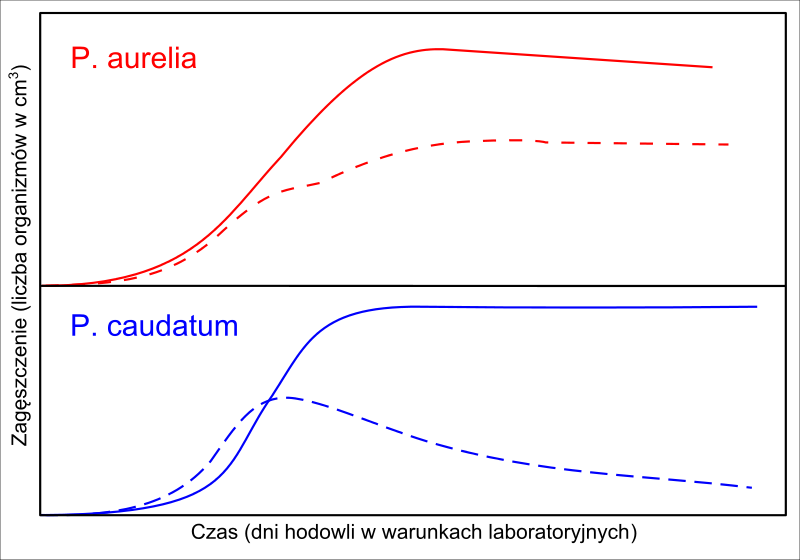What happens when you grow two different species of paramecium together?
Paramecium aurelia and Paramecium caudatum grow well individually, but when they compete for the same resources, P. aurelia outcompetes P. caudatum.
In ecology, the competitive exclusion principle, is a proposition that two species which compete for the same limited resource cannot coexist at constant population values. When one species has even the slightest advantage over another, the one with the advantage will dominate in the long term.
This leads either to the extinction of the weaker competitor or to an evolutionary or behavioral shift toward a different ecological niche.
Paramecium Graph

TASK – Analyze the two graphs. The solid lines indicate population growth as a single culture. The dashed lines indicate growth when both species are combined.
1. What happens wen P. caudatum is grown by itself?
2. What happens when the two species are mixed together in the same culture?
3. How does this data illustrate the competitive exclusion principle?
Grade Level: 9-12 | Time Required: 1 Hour
HS-LS2-2 Use mathematical representations to support and revise explanations based on evidence about factors affecting biodiversity and populations in ecosystems of different scales.

